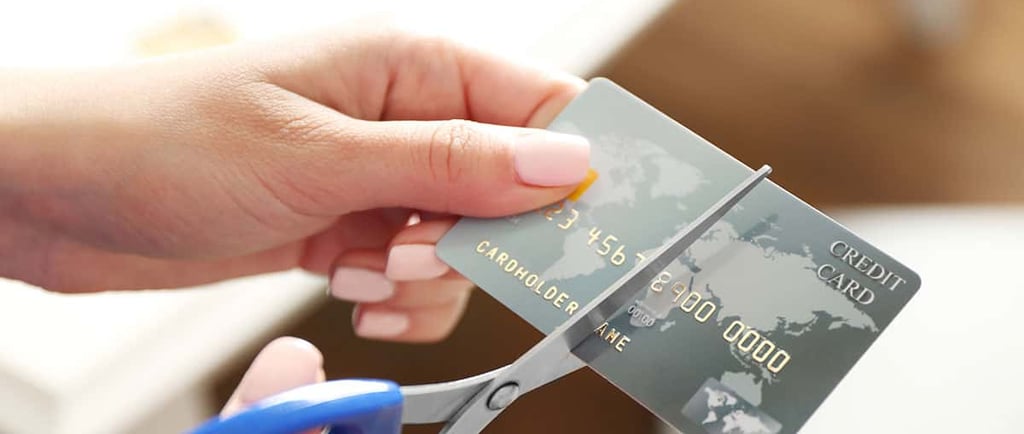Smart Ways to Pay Off Debt Faster
Discover effective strategies to reduce debt quickly and efficiently. Take control of your finances and become debt-free sooner than you think.
2/3/20253 min read


Debt can feel like a heavy weight but with the right plan, consistency, and a few smart moves, you can speed up repayment and save hundreds (or thousands) in interest. This guide breaks down practical strategies to help you take control of your debt, build momentum, and reach financial freedom faster.
Write Down Every Debt (Know the Numbers)
The first step is clarity. Make a complete list of all your debts: credit cards, personal loans, student loans, buy-now-pay-later balances, and any other obligations. For each debt, note:
Current balance
Interest rate (APR)
Minimum monthly payment
Seeing everything on one page removes fear and turns uncertainty into an actionable plan. Example: a $2,000 credit card at 18% APR costs you far more over time than a $2,000 low-interest personal loan so knowing rates matters.
Attack High-Interest Debt First (Smart Math)
Interest is the enemy of progress. Focus on paying extra toward the debts with the highest interest rates while continuing to pay the minimum on the rest. This method (the debt avalanche) minimizes interest paid overall and shortens your repayment timeline.
Example: If you have:
Card A: $3,000 at 20% APR
Card B: $1,000 at 12% APR
Putting extra money toward Card A saves you more in interest than paying down Card B first.
Use the Snowball When You Need Momentum
If motivation is the issue, the debt snowball can help. Pay off the smallest balance first while making minimum payments on others. The quick wins closing accounts build confidence and keep you on track.
Both avalanche and snowball work. Avalanche saves the most money; snowball keeps morale high. Pick the one that matches your personality and stick with it.
Trim Expenses and Redirect the Savings
Every dollar you free up speeds your debt-free date. Audit recurring costs and daily spending:
Cancel unused subscriptions
Cook more and eat out less
Negotiate a cheaper phone or internet plan
Example: Cutting just $100/month from non-essential spending adds $1,200/year toward debt that’s real progress.
Redirect every saved dollar straight to the debt you’re targeting. Treat it like a non-negotiable payment.
Boost Income with Side Hustles
If your budget alone can’t cover the payments you want, earn the difference. Side income can accelerate payoff dramatically.
Options:
Freelance gigs (writing, design, tutoring)
Selling items you no longer use
Gig economy work (delivery, rideshare)
Micro-services (logo design, voiceovers)
Even an extra $200–$500/month can shave months off your plan and reduce interest costs.
Refinance or Consolidate (When It Makes Sense)
If you have high-rate credit card debt, look into consolidation options that reduce rates:
Balance transfer cards with a 0% promo rate (watch transfer fees and term length)
Personal loans with lower APRs than your cards
Debt consolidation from a reputable lender
Refinancing reduces the interest drag but do the math. A lower APR with reasonable fees usually helps, but avoid extending terms that increase total interest paid over time.
Automate Bigger Payments (Make It Routine)
Automation removes the temptation to “skip” extra payments. Once you know how much extra you can afford, schedule automatic transfers or payments that include the extra amount.
Example automation:
Minimum payment + $100 extra each month to your focus debt
Or split an extra $50 twice a month if you’re paid biweekly
Automatic payments keep the plan moving even during busy months.
Negotiate Rates and Ask for Help
Call your card issuers and ask for a lower interest rate especially if you’ve been on-time. Many companies will lower APRs for responsible customers. Also explore hardship programs or interest-rate relief if you’re in a temporary bind.
Avoid Adding New Debt
While aggressively paying down debt, avoid opening new lines of credit or taking new loans. That defeats the purpose. Use cash or debit when possible, and if you keep a credit card for emergencies, store it out of easy reach to avoid temptation.
Track Progress and Celebrate Wins
Create a simple tracker a Google Sheet, an app, or even a whiteboard showing balances and the payoff date. Watching numbers fall is hugely motivating. Celebrate small wins: when you pay off a card, allow a small, budgeted reward to reinforce the habit.
Quick Example Plan (Real Numbers)
Total debt: $6,000 (Card A $3,500 @ 19%, Card B $1,500 @ 12%, Loan $1,000 @ 7%)
Monthly budget frees $250 from cuts + $300 side gig = $550 extra
Apply extra $550 to Card A (highest rate) while paying minima on others.
Within months, Card A is eliminated and you roll that payment into the next debt the snowball effect speeds payoff.
Final Tips
Prioritize emergency savings: keep a small $500–$1,000 buffer to avoid new debt from surprises.
Use windfalls (tax refunds, bonuses) to pay down principal, not splurges.
Stay consistent even small extra payments matter.
Conclusion
Becoming debt-free isn’t about magic it’s a blend of clarity, strategy, and disciplined action. Whether you choose avalanche or snowball, trim expenses, increase income, and automate payments. Do this consistently and you’ll pay less interest, shorten your debt timeline, and get closer to financial freedom every month.
Call to Action: Want a personalized payoff plan? Share your total balances, interest rates, and monthly budget and I’ll sketch a custom 6–12 month strategy for you.
